INTEGRATED CIRCUITS
DATA SHEET
PCF8574
Remote 8-bit I/O expander for
I2C-bus
Product specification
Supersedes data of 2002 Jul 29
2002 Nov 22
�
Philips Semiconductors
Remote 8-bit I/O expander for I2C-bus
Product specification
PCF8574
CONTENTS
1
2
3
4
5
5.1
5.2
6
6.1
6.2
6.3
6.4
7
7.1
7.2
7.3
8
9
10
11
12
13
13.1
13.2
13.2.1
13.2.2
13.3
13.3.1
13.3.2
13.3.3
13.4
14
15
16
17
FEATURES
GENERAL DESCRIPTION
ORDERING INFORMATION
BLOCK DIAGRAM
PINNING
DIP16 and SO16 packages
SSOP20 package
CHARACTERISTICS OF THE I2C-BUS
Bit transfer
Start and stop conditions
System configuration
Acknowledge
FUNCTIONAL DESCRIPTION
Addressing
Interrupt output
Quasi-bidirectional I/Os
LIMITING VALUES
HANDLING
DC CHARACTERISTICS
I2C-BUS TIMING CHARACTERISTICS
PACKAGE OUTLINES
SOLDERING
Introduction
Through-hole mount packages
Soldering by dipping or by solder wave
Manual soldering
Surface mount packages
Reflow soldering
Wave soldering
Manual soldering
Suitability of IC packages for wave, reflow and
dipping soldering methods
DATA SHEET STATUS
DEFINITIONS
DISCLAIMERS
PURCHASE OF PHILIPS I2C COMPONENTS
2002 Nov 22
2
�
Philips Semiconductors
Remote 8-bit I/O expander for I2C-bus
Product specification
PCF8574
FEATURES
1
• Operating supply voltage 2.5 to 6 V
• Low standby current consumption of 10 m A maximum
• I2C-bus to parallel port expander
• Open-drain interrupt output
• 8-bit remote I/O port for the I2C-bus
• Compatible with most microcontrollers
• Latched outputs with high current drive capability for
directly driving LEDs
• Address by 3 hardware address pins for use of up to
8 devices (up to 16 with PCF8574A)
• DIP16, or space-saving SO16 or SSOP20 packages.
2 GENERAL DESCRIPTION
The PCF8574 is a silicon CMOS circuit. It provides general
purpose remote I/O expansion for most microcontroller
families via the two-line bidirectional bus (I2C-bus).
3 ORDERING INFORMATION
The device consists of an 8-bit quasi-bidirectional port and
an I2C-bus interface. The PCF8574 has a low current
consumption and includes latched outputs with high
current drive capability for directly driving LEDs. It also
possesses an interrupt line (INT) which can be connected
to the interrupt logic of the microcontroller. By sending an
interrupt signal on this line, the remote I/O can inform the
microcontroller if there is incoming data on its ports without
having to communicate via the I2C-bus. This means that
the PCF8574 can remain a simple slave device.
The PCF8574 and PCF8574A versions differ only in their
slave address as shown in Fig.10.
TYPE NUMBER
PCF8574P;
PCF8574AP
PCF8574T;
PCF8574AT
PCF8574TS;
PCF8574ATS
PACKAGE
DESCRIPTION
plastic dual in-line package; 16 leads (300 mil)
NAME
DIP16
VERSION
SOT38-4
SO16
plastic small outline package; 16 leads; body width 7.5 mm
SOT162-1
SSOP20
plastic shrink small outline package; 20 leads; body width 4.4 mm
SOT266-1
2002 Nov 22
3
�
Philips Semiconductors
Remote 8-bit I/O expander for I2C-bus
Product specification
PCF8574
4 BLOCK DIAGRAM
handbook, full pagewidth
13
1
2
3
14
15
INT
A0
A1
A2
SCL
SDA
INTERRUPT
LOGIC
LP FILTER
PCF8574
INPUT
FILTER
2
I C BUS
CONTROL
SHIFT
REGISTER
8 BIT
I/O
PORT
16
8
VDD
VSS
POWER-ON
RESET
WRITE pulse
READ pulse
4
5
6
7
9
10
11
12
P0
P1
P2
P3
P4
P5
P6
P7
MBD980
Fig.1 Block diagram (pin numbers apply to DIP16 and SO16 packages).
2002 Nov 22
4
�
Philips Semiconductors
Remote 8-bit I/O expander for I2C-bus
Product specification
PCF8574
5 PINNING
5.1
DIP16 and SO16 packages
SYMBOL
A0
A1
A2
P0
P1
P2
P3
VSS
P4
P5
P6
P7
INT
SCL
SDA
VDD
handbook, halfpage
DESCRIPTION
PIN
1
2
3
4
5
6
7
8
9
10
11
12
13
14
15
16
address input 0
address input 1
address input 2
quasi-bidirectional I/O 0
quasi-bidirectional I/O 1
quasi-bidirectional I/O 2
quasi-bidirectional I/O 3
supply ground
quasi-bidirectional I/O 4
quasi-bidirectional I/O 5
quasi-bidirectional I/O 6
quasi-bidirectional I/O 7
interrupt output (active LOW)
serial clock line
serial data line
supply voltage
A0
A1
A2
P0
P1
P2
P3
VSS
1
2
3
4
5
6
7
8
PCF8574P
PCF8574AP
16
VDD
15
SDA
14
SCL
13
INT
12
P7
11
P6
10
P5
9
P4
handbook, halfpage
A0
A1
A2
P0
P1
P2
P3
VSS
1
2
3
4
5
6
7
8
PCF8574T
PCF8574AT
16
VDD
15
SDA
14
SCL
13
INT
12
P7
11
P6
10
P5
9
P4
MBD979
MCE001
Fig.2 Pin configuration (DIP16).
Fig.3 Pin configuration (SO16).
2002 Nov 22
5
�
Philips Semiconductors
Remote 8-bit I/O expander for I2C-bus
Product specification
PCF8574
5.2
SSOP20 package
SYMBOL
INT
SCL
n.c.
SDA
VDD
A0
A1
n.c.
A2
P0
P1
P2
n.c.
P3
VSS
P4
P5
n.c.
P6
P7
handbook, halfpage
DESCRIPTION
PIN
1
2
3
4
5
6
7
8
9
10
11
12
13
14
15
16
17
18
19
20
interrupt output (active LOW)
serial clock line
not connected
serial data line
supply voltage
address input 0
address input 1
not connected
address input 2
quasi-bidirectional I/O 0
quasi-bidirectional I/O 1
quasi-bidirectional I/O 2
not connected
quasi-bidirectional I/O 3
supply ground
quasi-bidirectional I/O 4
quasi-bidirectional I/O 5
not connected
quasi-bidirectional I/O 6
quasi-bidirectional I/O 7
INT
SCL
n.c.
SDA
VDD
A0
A1
n.c.
A2
1
2
3
4
5
6
7
8
9
P0
10
20
P7
19
P6
18
n.c.
17
P5
16
P4
15
VSS
14
P3
13
n.c.
12
P2
11
P1
PCF8574TS
PCF8574ATS
MBD978
Fig.4 Pin configuration (SSOP20).
2002 Nov 22
6
�
Philips Semiconductors
Remote 8-bit I/O expander for I2C-bus
Product specification
PCF8574
6 CHARACTERISTICS OF THE I2C-BUS
6.2
Start and stop conditions
The I2C-bus is for 2-way, 2-line communication between
different ICs or modules. The two lines are a serial data
line (SDA) and a serial clock line (SCL). Both lines must be
connected to a positive supply via a pull-up resistor when
connected to the output stages of a device. Data transfer
may be initiated only when the bus is not busy.
6.1
Bit transfer
One data bit is transferred during each clock pulse. The
data on the SDA line must remain stable during the HIGH
period of the clock pulse as changes in the data line at this
time will be interpreted as control signals (see Fig.5).
Both data and clock lines remain HIGH when the bus is not
busy. A HIGH-to-LOW transition of the data line, while the
clock is HIGH is defined as the start condition (S).
A LOW-to-HIGH transition of the data line while the clock
is HIGH is defined as the stop condition (P) (see Fig.6).
6.3
System configuration
A device generating a message is a ‘transmitter’, a device
receiving is the ‘receiver’. The device that controls the
message is the ‘master’ and the devices which are
controlled by the master are the ‘slaves’ (see Fig.7).
handbook, full pagewidth
SDA
SCL
data line
stable;
data valid
change
of data
allowed
Fig.5 Bit transfer.
MBC621
handbook, full pagewidth
SDA
SCL
S
START condition
SDA
SCL
P
STOP condition
MBC622
Fig.6 Definition of start and stop conditions.
SDA
SCL
MASTER
TRANSMITTER /
RECEIVER
SLAVE
RECEIVER
SLAVE
TRANSMITTER /
RECEIVER
MASTER
TRANSMITTER
MASTER
TRANSMITTER /
RECEIVER
Fig.7 System configuration.
MBA605
2002 Nov 22
7
�
Philips Semiconductors
Remote 8-bit I/O expander for I2C-bus
Product specification
PCF8574
6.4
Acknowledge
The number of data bytes transferred between the start
and the stop conditions from transmitter to receiver is not
limited. Each byte of eight bits is followed by one
acknowledge bit (see Fig.8). The acknowledge bit is a
HIGH level put on the bus by the transmitter whereas the
master generates an extra acknowledge related clock
pulse.
A slave receiver which is addressed must generate an
acknowledge after the reception of each byte. Also a
master must generate an acknowledge after the reception
of each byte that has been clocked out of the slave
transmitter. The device that acknowledges has to pull
down the SDA line during the acknowledge clock pulse, so
that the SDA line is stable LOW during the HIGH period of
the acknowledge related clock pulse, set-up and hold
times must be taken into account.
A master receiver must signal an end of data to the
transmitter by not generating an acknowledge on the last
byte that has been clocked out of the slave. In this event
the transmitter must leave the data line HIGH to enable the
master to generate a stop condition.
handbook, full pagewidth
DATA OUTPUT
BY TRANSMITTER
DATA OUTPUT
BY RECEIVER
SCL FROM
MASTER
S
START
condition
not acknowledge
acknowledge
1
2
8
9
clock pulse for
acknowledgement
MBC602
Fig.8 Acknowledgment on the I2C-bus.
2002 Nov 22
8
�
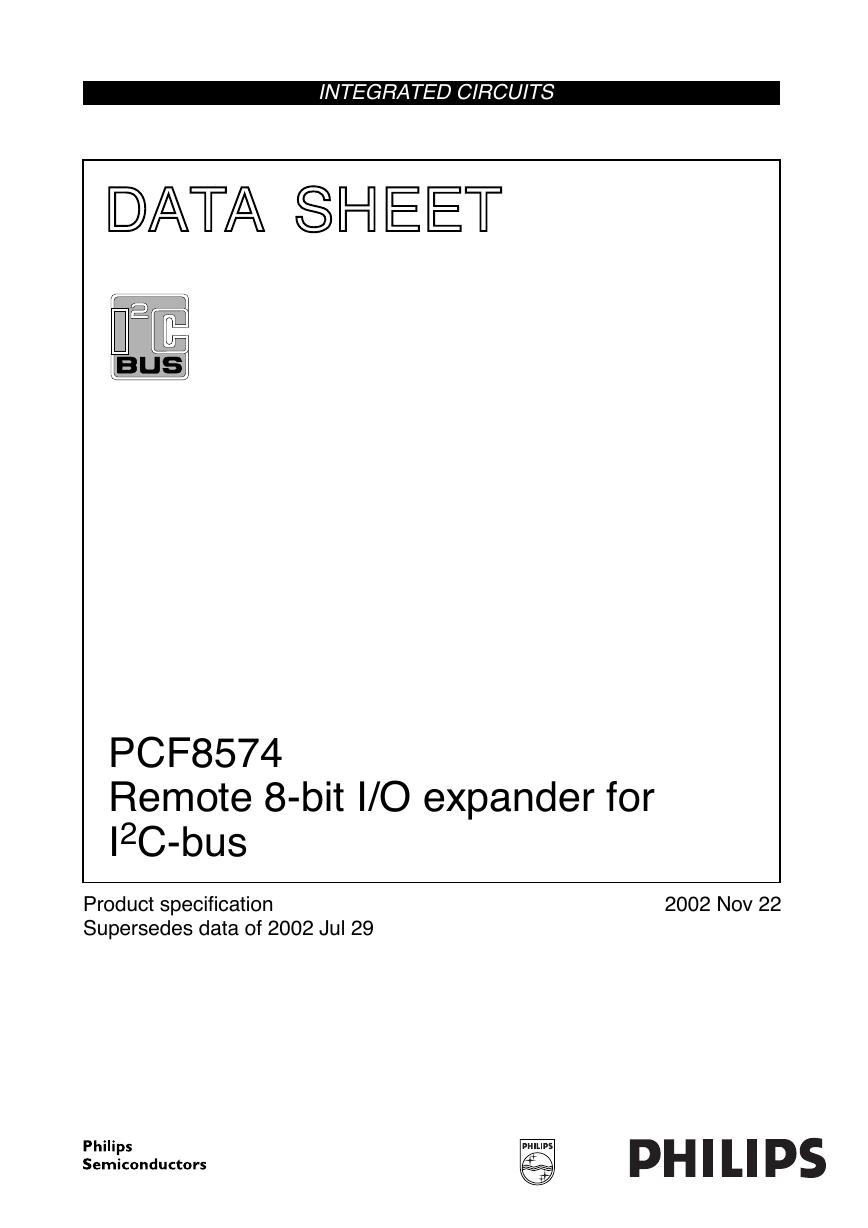
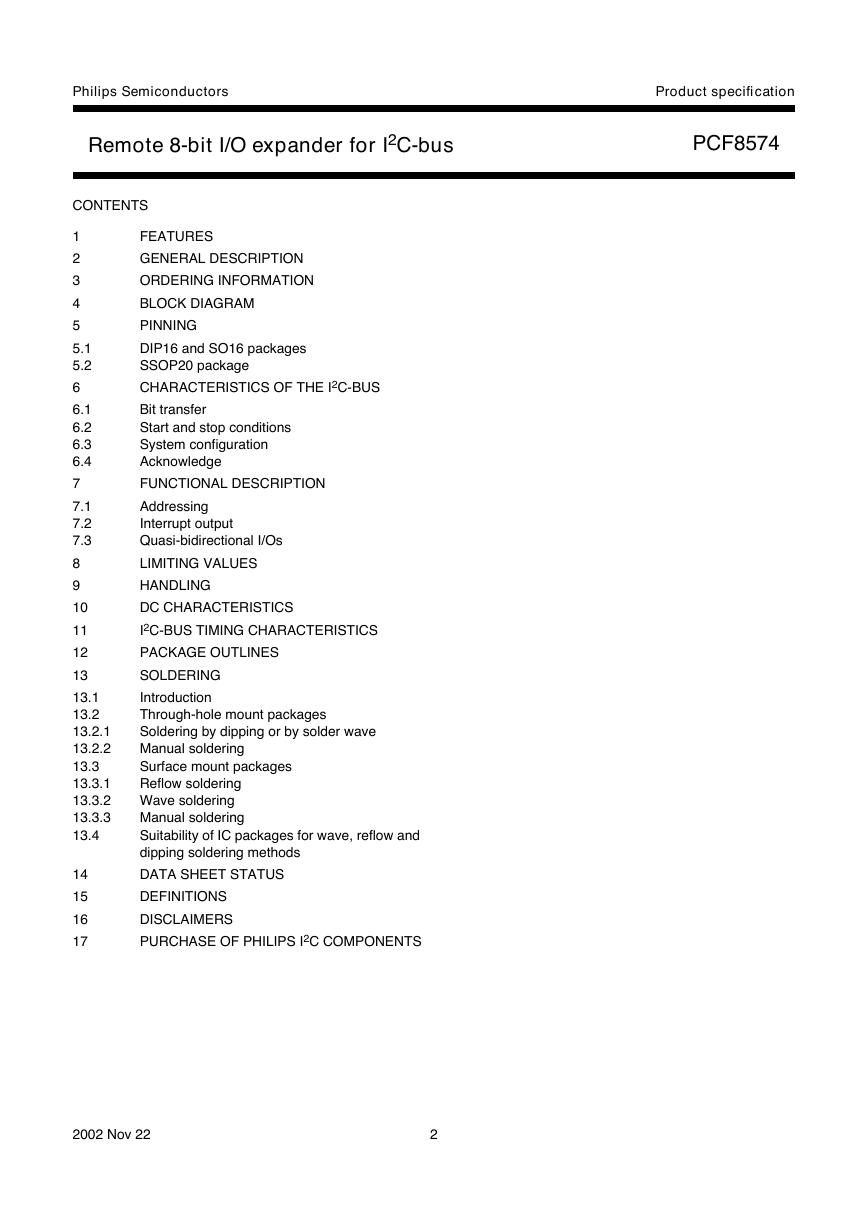
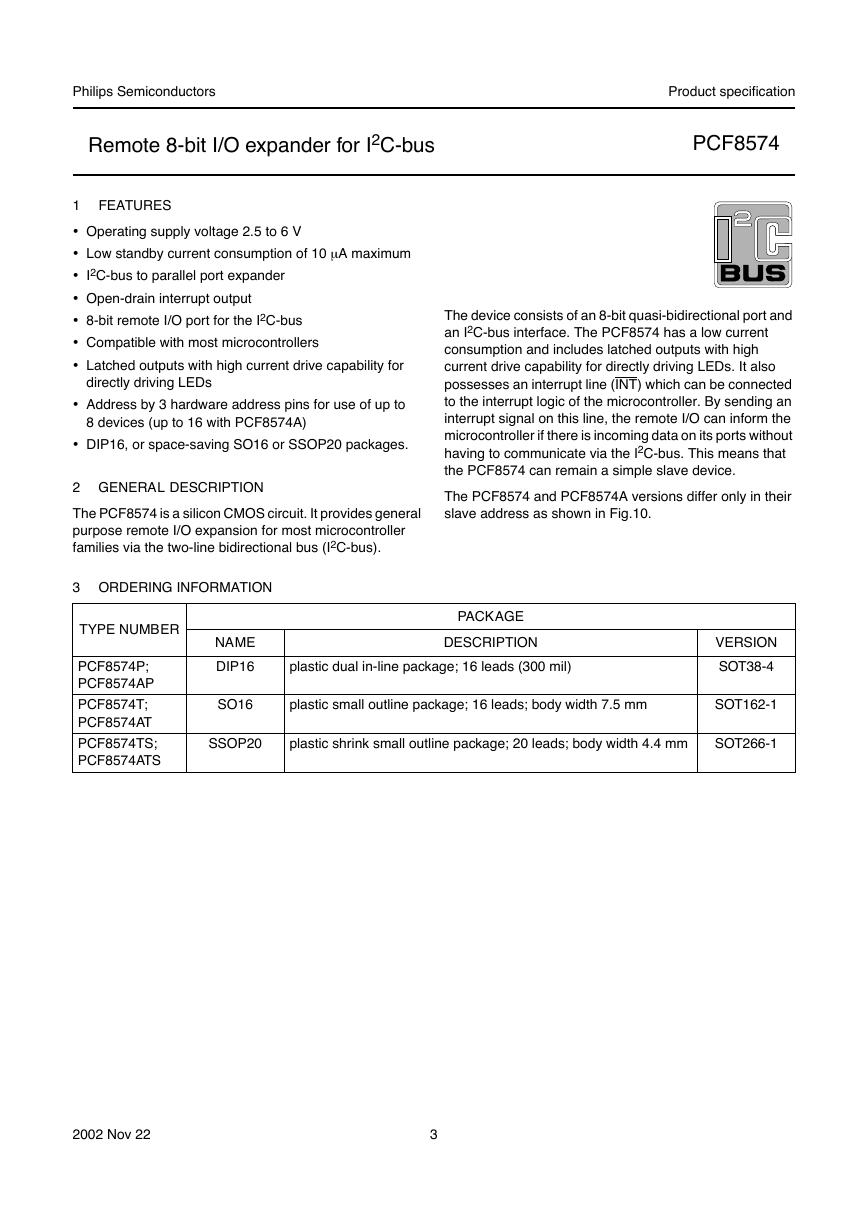

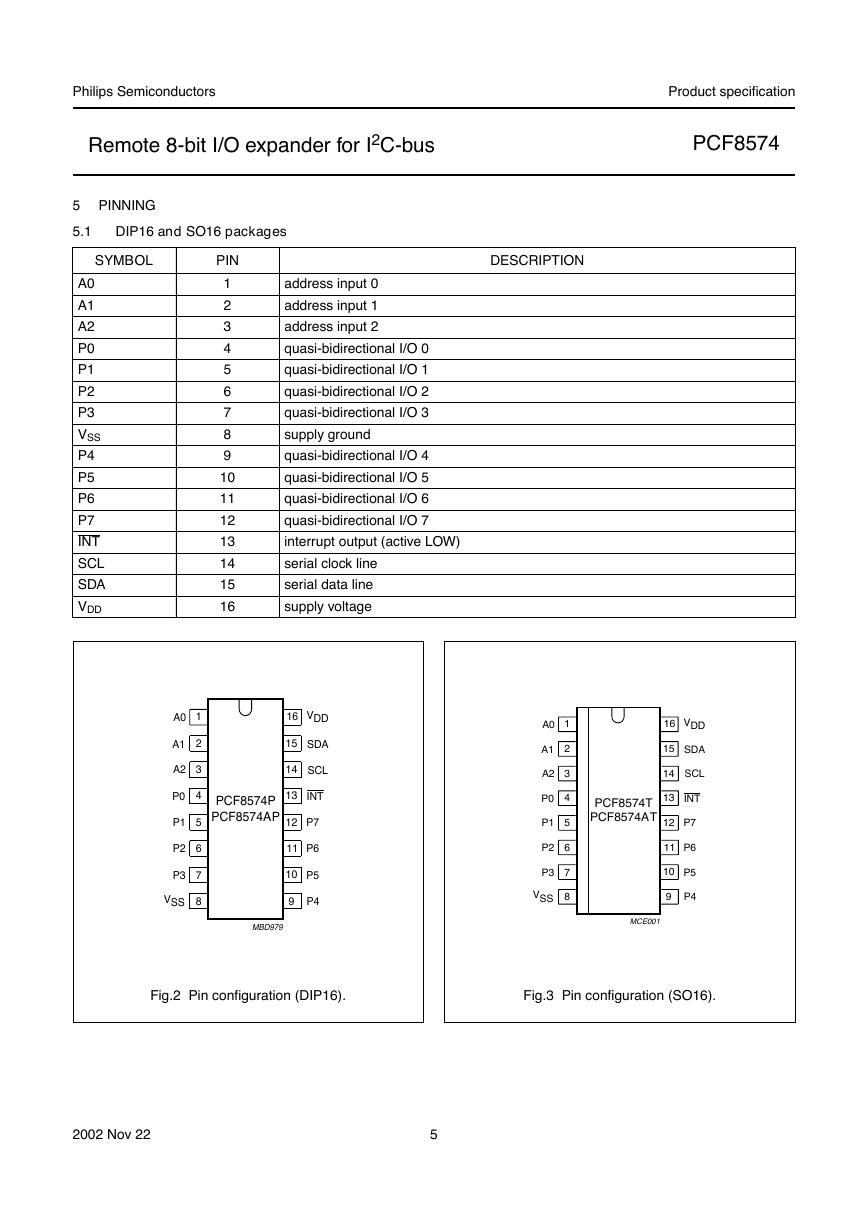
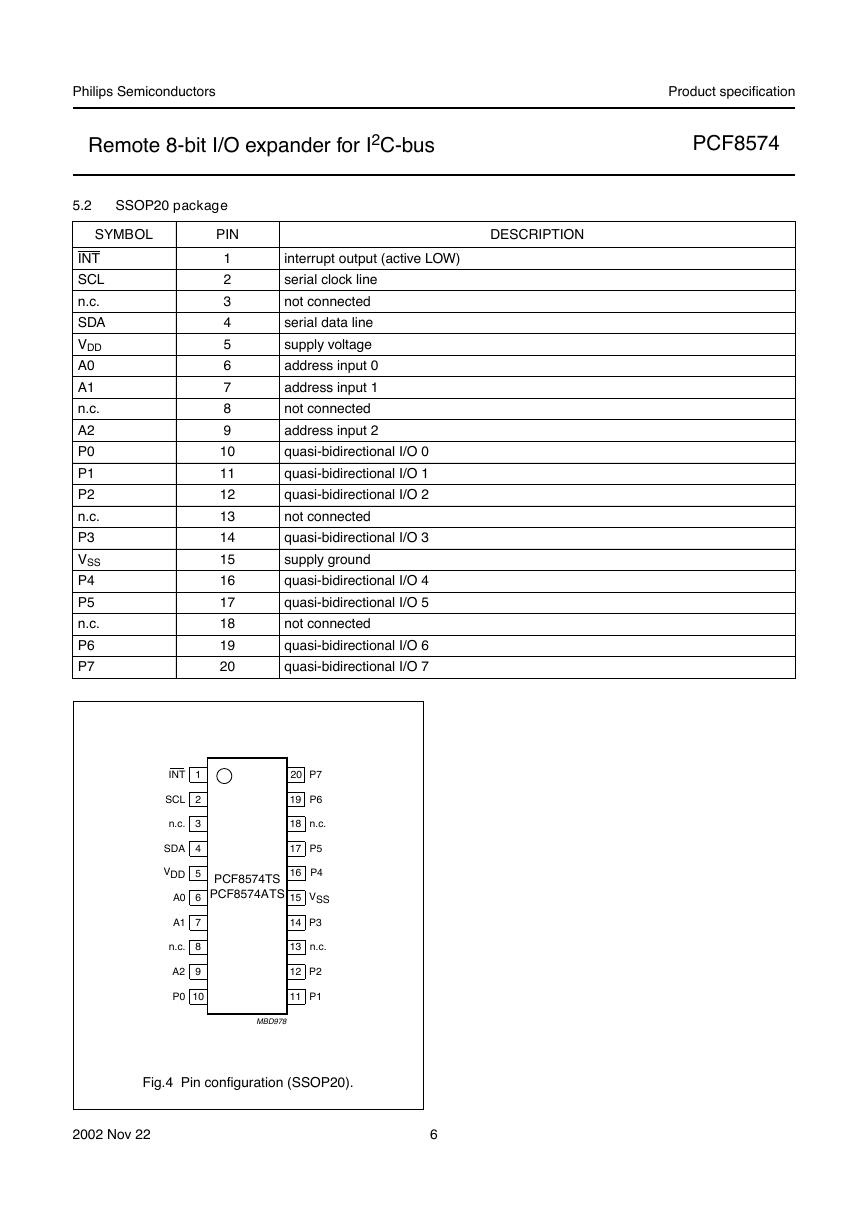
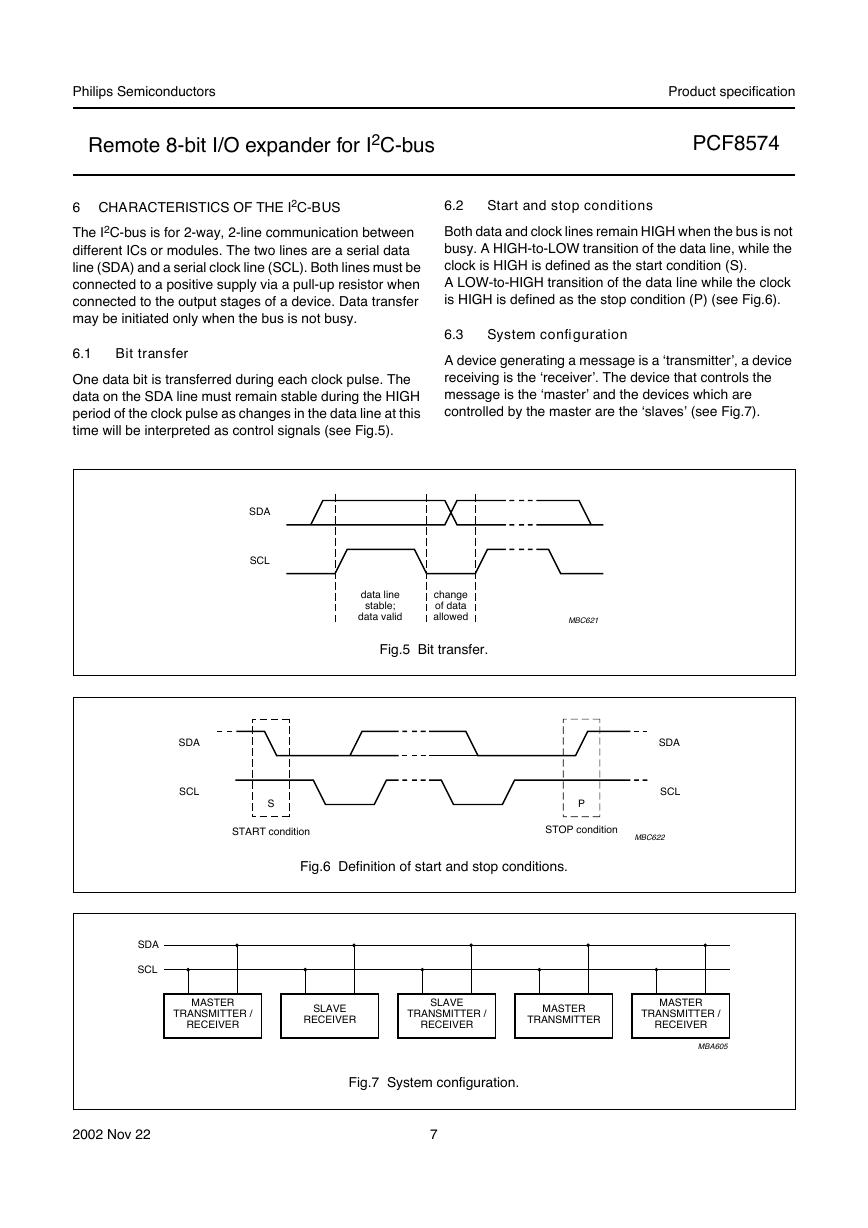









 V2版本原理图(Capacitive-Fingerprint-Reader-Schematic_V2).pdf
V2版本原理图(Capacitive-Fingerprint-Reader-Schematic_V2).pdf 摄像头工作原理.doc
摄像头工作原理.doc VL53L0X简要说明(En.FLVL53L00216).pdf
VL53L0X简要说明(En.FLVL53L00216).pdf 原理图(DVK720-Schematic).pdf
原理图(DVK720-Schematic).pdf 原理图(Pico-Clock-Green-Schdoc).pdf
原理图(Pico-Clock-Green-Schdoc).pdf 原理图(RS485-CAN-HAT-B-schematic).pdf
原理图(RS485-CAN-HAT-B-schematic).pdf File:SIM7500_SIM7600_SIM7800 Series_SSL_Application Note_V2.00.pdf
File:SIM7500_SIM7600_SIM7800 Series_SSL_Application Note_V2.00.pdf ADS1263(Ads1262).pdf
ADS1263(Ads1262).pdf 原理图(Open429Z-D-Schematic).pdf
原理图(Open429Z-D-Schematic).pdf 用户手册(Capacitive_Fingerprint_Reader_User_Manual_CN).pdf
用户手册(Capacitive_Fingerprint_Reader_User_Manual_CN).pdf CY7C68013A(英文版)(CY7C68013A).pdf
CY7C68013A(英文版)(CY7C68013A).pdf TechnicalReference_Dem.pdf
TechnicalReference_Dem.pdf